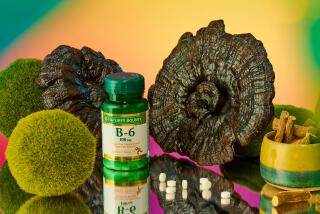The story of gin: A spirited interview
As we roll into the final holiday parties of the year, spirits are high -- and flowing. “The Book of Gin” by Richard Barnett traces the history of gin, which was once believed to prevent plague, ease the pains of childbirth and treat a lack of courage.
Barnett found in gin a story that combined pleasure, history, pain and politics. When not writing about gin, the award-winning author runs the Sick City Project, which explores how medicine intersects with public life. Barnett took some time to chat with us about the flavors, aromas and varieties of gin -- as well as the spirit’s complex and rich history.
Out of the wide range of liquors to choose from, why gin?
I spend my days teaching and writing about the history of science and medicine, so I’m always looking for stories that cast light on human life and the ways in which we think about pain and pleasure, health and disease. The story of gin takes in alchemy and science, royal families and poor migrants, armies and navies, fashions and revolutions as they have moved around the globe. Gin has a history with ethical and philosophical overtones. It reveals how we’ve chosen to comfort ourselves when times were tough, and how we’ve aspired to elegance and modernity when times were better. (Oh, and it’s good to drink, too.)
What are the features that delight you most about gin?
Gin is nothing less than world history in a glass. Dutch genever, the first incarnation of gin, was created in an age of world-changing trade and exploration. It was distilled from Baltic grain, flavored with spices from the East Indies and sugar from the West Indies, and it was carried all around the world on the ships of the Dutch East India Company, the world’s first multinational corporation. Gin has had many global adventures, and its status has changed radically over five centuries, from a drink of the rich and well-traveled to the poison of the poor and back again. Most of all, I think, gin is an urban drink, and it has been said to possess all the virtues and vices of urban life. You can map the spread of modern cities by following the changing consumption of gin.
Was gin ever used for anything other than a drink?
Absolutely! The idea of distilling spirit and scenting or flavoring it with herbs and spices emerged in the Islamic Golden Age of the 8th and 9th centuries AD, and indeed our word “alcohol” comes from an Arabic word meaning “spirit.” At the House of Wisdom -- a kind of research institution in Baghdad, the capital of the Islamic empire -- alchemists and philosophers experimented with stills and alembics, trying to make perfumes and medicines. When they distilled wine, they discovered a mysterious substance, a “water” that burned and evaporated away to nothing. Some thought it was an elixir of life, others that it was a form of the universal force that permeated all things. For centuries distilled alcohol was used almost exclusively as a medicine, and the very first “proto-gin” -- spirit infused with juniper -- was made in an Italian monastery-hospital in the 11th century. It wasn’t until the late 16th century that Dutch distillers began to make a sweet, juniper-flavored liquor for drinking.
Why was gin one of the most popular bootleg liquors during Prohibition?
One of the great reasons for gin’s popularity, both in Prohibition-era America and in the British gin craze of the 18th century, is that its flavor could be faked fairly easily. Scotch whiskey, for instance, has a complex flavor, which depends upon high-quality ingredients and years of maturation in barrels. But gin in its most basic form is neutral spirit flavored with juniper, and bootleggers quickly found that they could make a passable gin with industrial alcohol and juniper oil or turpentine. Even bootleg gin, however, might have been preferable to its gin-craze predecessor. Eighteenth-century distillers were not above adding a splash of sulfuric acid to give a little extra fieriness.
You write that since the late 1980s there has been a gin renaissance. What caused this sudden rise in gin’s popularity?
By the mid-’80s liquor manufacturing was in a dire state, with gin sales falling fast and many of the traditional techniques and recipes abandoned in favor of mass-industrial production and a bland, homogeneous product. The turning-point came in 1988 with the launch of Bombay Sapphire -- the first new premium gin for decades, and one with a marketing campaign built around heritage, quality and character. Around the same time, the Swing Revival and Cocktail Nation trends -- remember “Swingers”? -- helped to give younger drinkers a new taste for gin. More recently, the success of “Mad Men” and the cult of James Bond certainly hasn’t harmed the mystique of the martini. In the last decade craft distilling has become hip, with dozens of small companies across Europe and the U.S. producing their own distinctive and delicious gins. Many of the bigger corporate brands have returned to an older, artisanal style of distilling. So, thanks to the gin renaissance, this is the best time in the last 500 years to be drinking gin.
What are some gin cocktails you would recommend our readers making?
For the holiday season there’s nothing better than an old-fashioned hot gin punch -- Charles Dickens’ favorite Christmas drink, and one he puts in the hands of his characters in stories like “A Christmas Carol”. Traditionally this could be made by plunging a hot poker into a mixture of gin, Madeira, lemon juice, honey, cloves, nutmeg and cinnamon, but a saucepan and a stove will do just as well. For something more refreshing but equally festive, try a gin fizz (gin, lemon juice, sugar, egg white and soda water) made with damson or sloe gin.
Is there any way to drink gin and avoid a hangover?
Moderation is the only sure method, I’m afraid. As someone once wrote in Punch magazine, life is mostly a question of the liver.
How do you prefer your gin? What is your favorite gin-based cocktail?
Oddly enough I wasn’t a big gin-drinker before I began this book, but I’ve acquired something of a taste for that great American contribution to world culture -- the martini. As an aperitif I like it very cold and very dry, with a zesty gin like Tanqueray Rangpur or Greenall’s Berkeley Square. For more summery occasions, a long Negroni with Hendrick’s or Martin Miller is just the thing. As a British writer I should also fly the flag for a classic gin and tonic with Plymouth, a gin that is very nearly as old as the United States.
Do you have plans to write “The Book of” any other types of alcohol?
The time I’ve spent learning and writing about gin has been an absolute joy, but for my next books I’ll be moving on to different kinds of spirit -- the history of the unconscious mind before Freud, and the ways in which digital culture is transforming the concept of the sublime. But I’ll always have a soft spot for the scent of juniper, and if you want to know more about gin and its remarkable global history, point your smartphone or tablet toward my Sick City Walks web app and my Sick City Project, an ongoing exploration of life and death in London’s history.
ALSO:
An Amazon.com jungle of wrapping paper
A busload of poets: Michael Zapruder’s ‘Pink Thunder’
Help Dennis Lehane find his lost dog, appear in his next book
More to Read
Sign up for our Book Club newsletter
Get the latest news, events and more from the Los Angeles Times Book Club, and help us get L.A. reading and talking.
You may occasionally receive promotional content from the Los Angeles Times.








